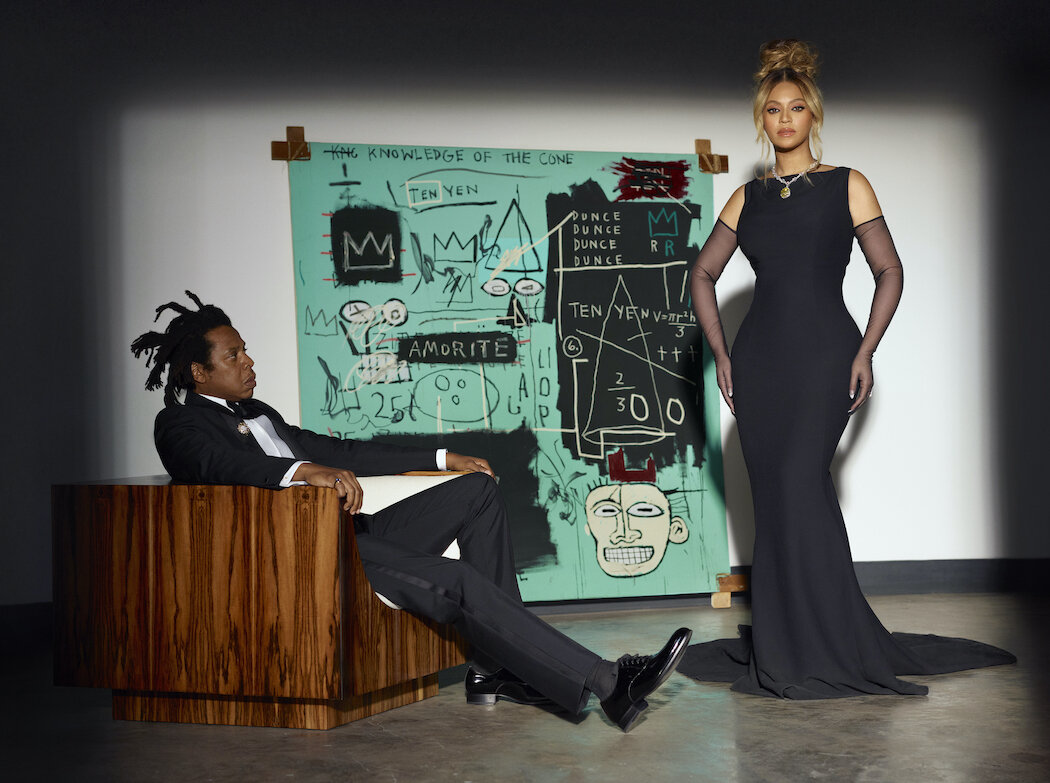Baubles and Basquiat
I grew up loving the movie Breakfast at Tiffany’s before I came to recognize the blatant cultural appropriation of Mickey Rooney’s role as Mr. Yunioshi. Before I fully understood the glamorized plot of Audrey Hepburn playing a criminal and a call girl with George Peppard playing the male version of Hepburn’s party girl character. Add a layer of whiteness to this movie, and it’s wrapped up in the modern-day label called privilege.
I have also loved Basquiat since I was a teenager. I admired his work before I understood who he was as an artist. Being drawn to his chaotic compositions made me observe and think about art in a way I had not previously experienced. Eventually, I learned about his life and gained an appreciation for his journey as a Black artist trying to break into a world steeped in whiteness.
Obnoxious Liberals. 1982.
Basquiat grew up in Brooklyn, studied art history, and consistently visited New York City museums and institutions. Starting his career as an anti-establishment graffiti artist, Basquiat was born with innate natural talent. He would become a darling of gallery leaders who exploited his Blackness and growing drug problem. As his career skyrocketed, Basquiat mocked his fame and was very conscious of being the first Black artist to succeed in the global art market. He channeled his rage of racial injustices into his work by creating pieces such as Obnoxious Liberals and Irony of Negro Policeman. Both critique capitalism and the powerlessness of Blacks living in a white America.
Irony of Negro Policeman. 1981.
Basquiat was trying to separate himself from being stereotyped as a “ghetto” or “Black” artist by stating, “I am not a black artist. I am an artist.” Despite his insatiable drug use, he was keenly aware of being used and commodified by gallery owners that lined their pockets with the commissions of his work. “I wanted to be a star, not a gallery mascot.” Sadly, it was toward the end of his life when he’d come to realize that he’d burned through money, lost friends, and had few people in his life he could trust. The art world had used him and spit him out. Basquiat died of a drug overdose at the young age of twenty-seven. It is only today, posthumously, that his paintings are selling in the millions.
I would think that individuals such as Jay-Z and Beyonce would understand the history of Jean-Michel Basquiat. The lack of awareness from Tiffany's newest ad campaign left me feeling disappointed and questioning the decision-making behind the carefully directed marketing ploy. The New York Times describes the campaign as truly having “something for everyone.” Not only did Tiffany's alter the coloring of Basquiat's 1982 Equals Pi, but Beyonce is dressed to represent Audrey Hepburn as Jay-Z lounges in a chair mimicking a famous photograph of the late artist.
Jay-Z and Beyonce are disregarding the racism that exists within the 1961 movie, but also seem to be disregarding the commercial capitalism that Basquiat was so vocal about in his paintings. Tiffany's is pledging $2 million toward scholarships at Historically Black Colleges and Universities as part of an initiative to support underrepresented communities. Yet, critics have noted the wealth of Tiffany's founder Charles Lewis is derived from the labor of enslaved communities.
I don't really know what Basquiat would have thought about the campaign. Whenever I glance down at the three-point crown tattooed on my inside right wrist, I pause to consider what might have been if he lived. I like to imagine him as a contemporary man, clean and sober, finding a second life within his art. Serving as a role model to street artists and musicians while casually walking New York streets, enjoying life to its fullest. Nowhere in this image have I considered The Carters filling this role while adding to their billion-dollar empire.
“I was trying to make paintings different from the paintings that I saw a lot of the time, which were mostly minimal, and they were highbrow and alienating, and I wanted to make very direct paintings that most people would feel the emotion behind when they saw them.” ”


